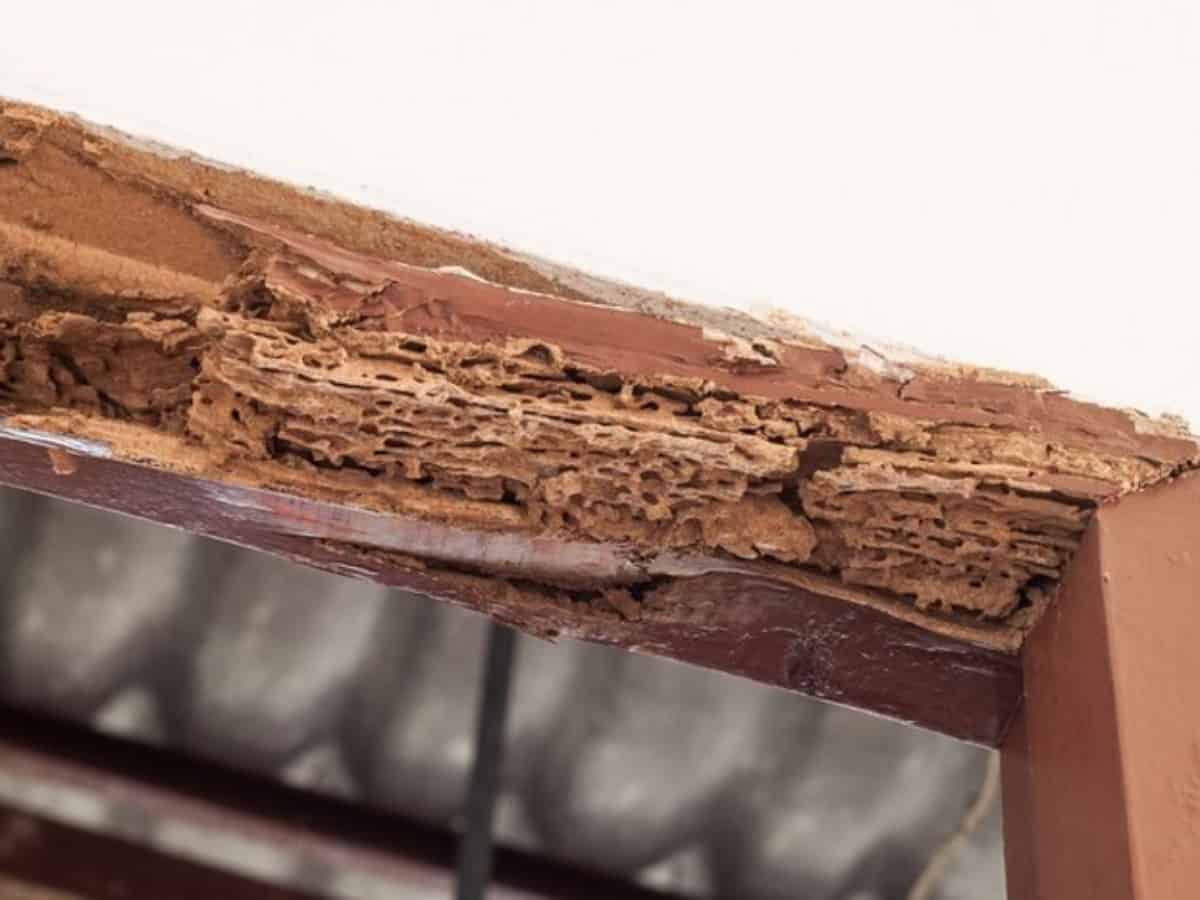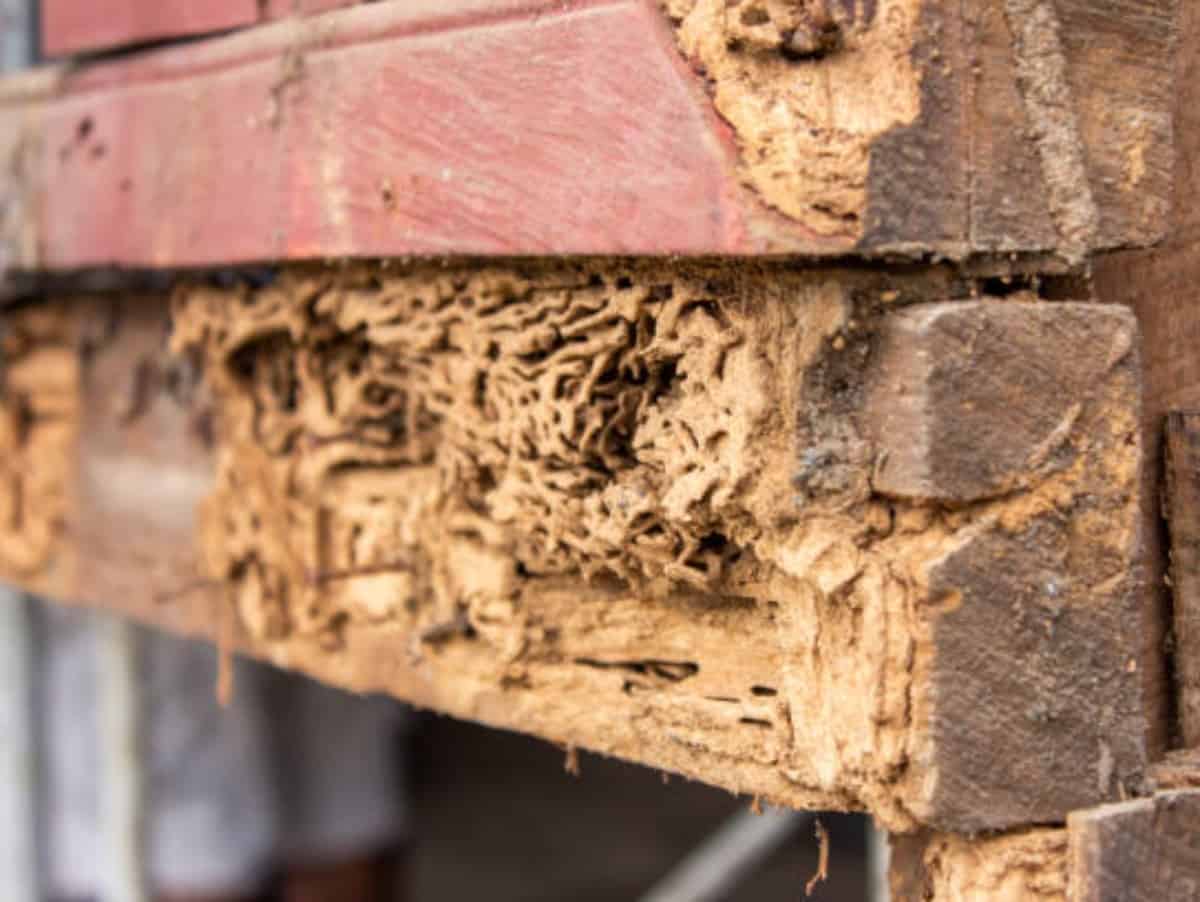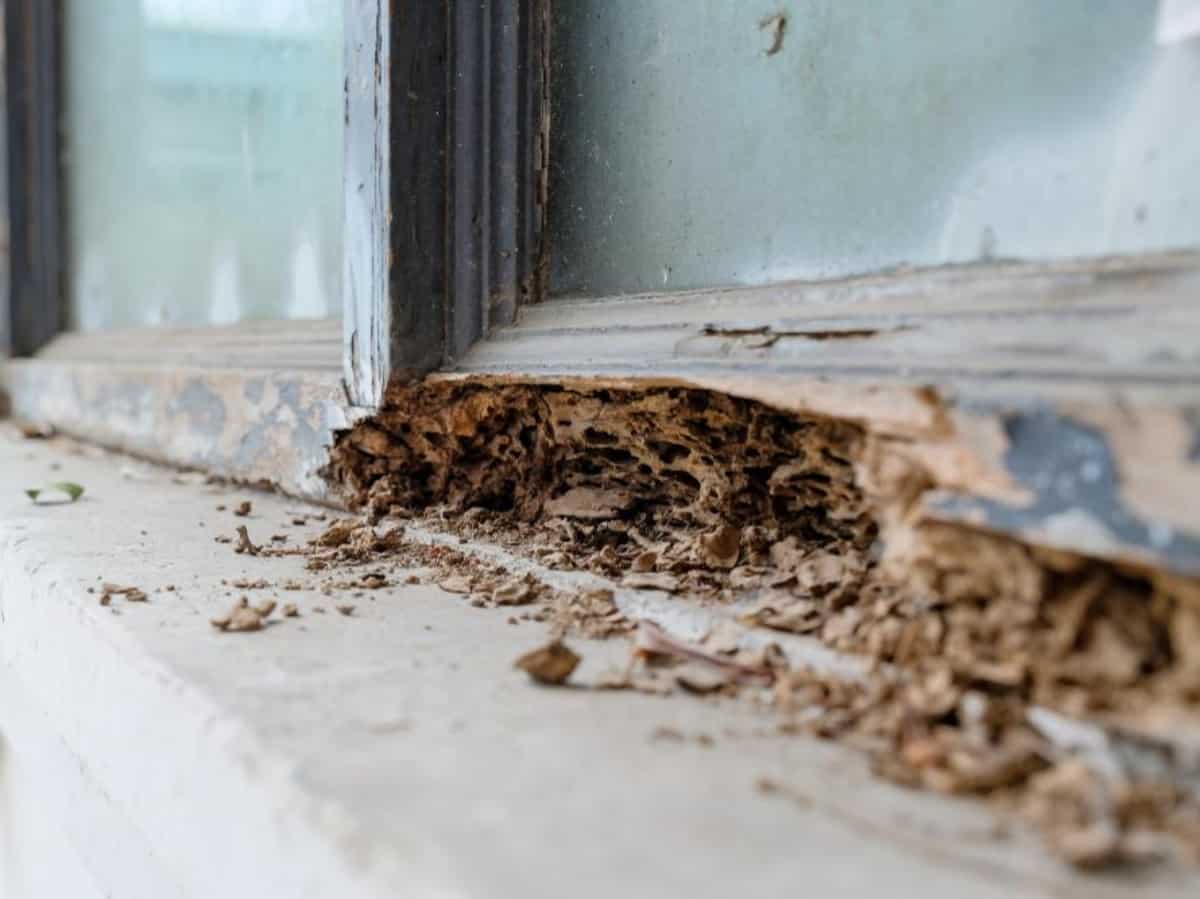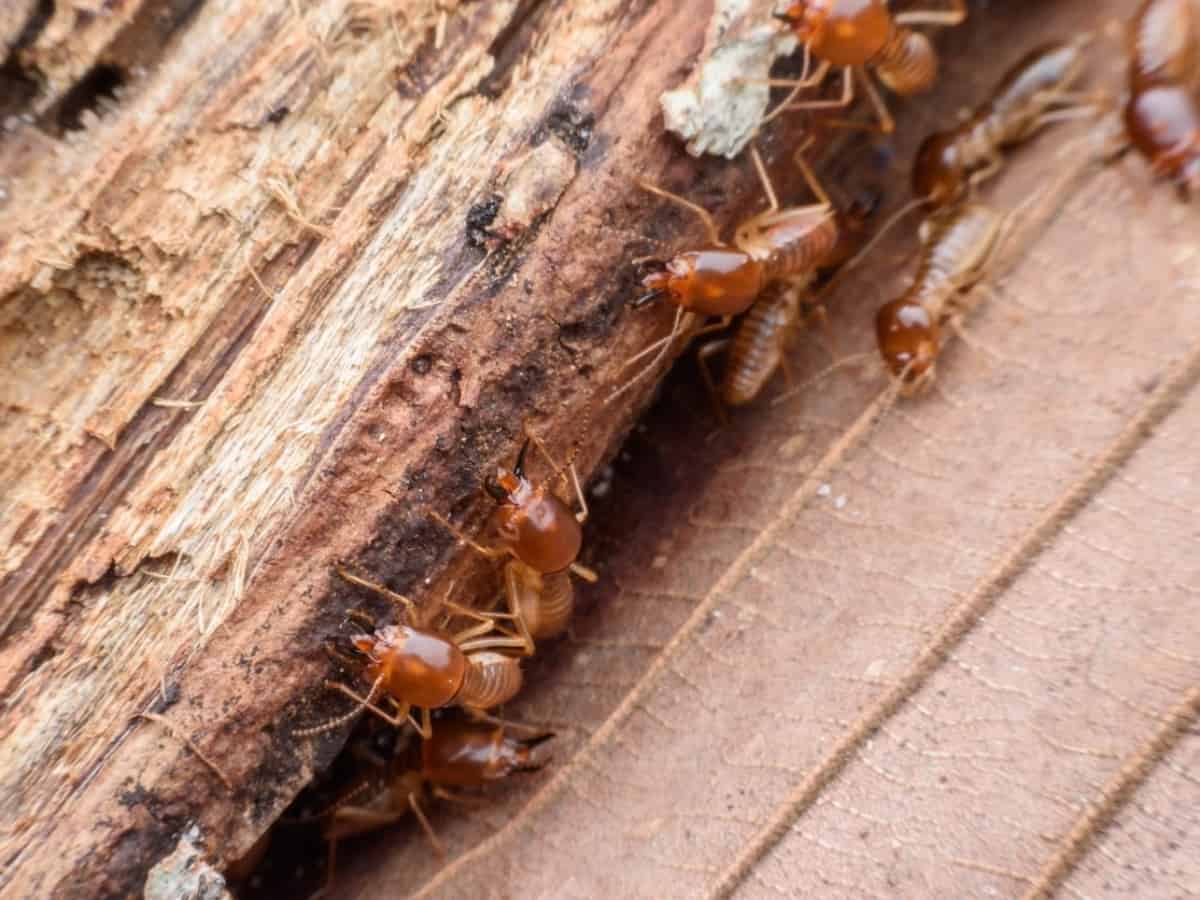The last thing you need is for your home’s structural integrity to diminish as a result of a termite infestation that wreaks havoc for weeks, months or even years without you knowing. Heighten your awareness of these little buggers and you will have a better idea as to whether they are compromising your home. Most homeowners are understandably unaware as to whether their home insurance covers the cost of termite damage. So, does homeowners insurance cover termite damage?
Termites are a direct threat to your home. However, if you are like most people, you don’t know the common signs of termites and termite damage. You might be wondering, “Does homeowners insurance cover termite damage?” Fret not, as we have the answers you are looking for. Let’s take a look at the signs of termites, the magnitude of their threat and answer the question of whether homeowners insurance covers termite damage.
Signs of Termite Damage
Termites have the potential to weaken your home’s structural integrity yet you might not be aware of their presence until they have caused significant damage. Be hyper-aware of the common signs of termite damage and you will be able to proactively address this problem before it spirals out of control. Even if you don’t see termites in your home, they might be inflicting serious damage to your most valuable asset. So don’t assume your home is termite-free simply because you have not seen them scurrying around your basement or another part of the house.

Wood Damage
Termites hollow out wood. Wood damage behind a wall or damage to a wooden floor occurs when termites gnaw through the material to find cellulose. The end result of this destruction is lengthy grooves that gradually weaken the wood, causing significant structural damage. Wood that has been gnawed by termites typically looks similar to honeycomb and has a hollowed-out sound when contacted.
Blisters
Wood flooring blisters are another common sign of termite damage. Such blistering is a sign that termites are chewing away below the wood or within the wood itself. If your home has subterranean termites, the subfloor will be damaged, making the wood flooring look as though it has been compromised by water.
Mud tubes the size of pencils in the area where the home’s foundation meets the ground are the perfect home for termites. These tunnels block dry and cool air, creating a space for termites to thrive. If your property has any such tubes, it is an indication that termites might be present.
Droppings
Termites leave droppings. Though these droppings are small, you might be able to identify them. In particular, drywood termites nestle into the interior of wood, knock out holes and drop their waste through those openings. If you spot small pellet mounds, it is an indication that your home has been breached by termites.
Can Termites Damage Homes?
Indeed, termites can cause significant damage to your home. If termites invade your home, they will damage the building’s structure along with the areas by the doors and windows. If the infestation is significant, the interior of your home’s walls will be damaged. Termites can even progress to damaging the wood furniture within your home. The wood in your home’s attic and beneath the house can also be compromised by termites. If termites chew away at the wood of your home, its structural integrity will be significantly weakened.
Termites will also zero in on:
- Facia
- Window sills
- Doors
- Outdoor trim
- Wood patios
- Patio covers
- Gazebos
- Posts
- Additional outdoor wood structures
Termites that make their way into your home will zero in on bookshelves, couch frames, furniture, antiques and everything else containing wood.

How Do You Find Termites?
Though you might not ever see a termite in your home, they can cause considerable damage without crossing your line of vision. Termites are often attracted to light. Some termites such as drywood termites, are inclined to swarm following rainfall. If you spot any discarded wings in your home, it is an indication that you have flying termites.
If you suspect the bug that has crossed your basement, attic or other part of your home is a termite, consider the following. Termites have a lighter hue than ants. The typical termite has a cream/white color, sometimes even appearing as though it is clear. Termites have straight antennae as compared to ants’ elbowed antennae. Termites that fly have wings that are of the same size. Alternatively, ant antennae sets are of different sizes.
Subterranean termites are often located beneath ridges within wallpaper that are essentially miniature tunnels. Termites of the Formosan variety tend to create satellite nests between studs and joists. Drywood termites pop in and out of pinholes.
If you suspect a part of your home has termite damage, knock on it to get a sense of whether the wood has been hollowed out by these critters. Door warping, stiff windows and a vacuum cleaner that moves through the skirting board are also red flags that termites exist below.
Cost of Repair
Repairing a home after termite damage is not exactly cheap. It will certainly help to pre-treat soil before an addition is built on the current property. However, most termite problems are discovered after the home has been constructed and has stood strong for several years. The extent of the damage dictates the repair cost. Even the type of termite can shape the cost. If you know or suspect you have termites in your home, reach out for a timely repair to minimize the damage and subsequent cost of repair. Prompt detection of termite damage can make the difference between spending $500 and several thousands of dollars or even more. In general, most termite damage repair projects cost a couple thousand dollars.
The typical termite repair service charges around $100 per square foot of space to be repaired. Budget around $3,000 for the repair and you will likely find this figure is in the ballpark of the final repair bill. Keep in mind, the cosmetic damage alone to address the discoloration of sheetrock, peeling paint and floors that have buckled will likely cost $1,000 to $2,000 alone. The specific material damaged and the material selected for replacement will ultimately shape the final repair cost.
Is There a Way to Prevent Termites?
You can do your part to prevent termites from invading your home by moving lumber, firewood and cellulose items as far away from your property as possible. Above all, do not stack wood against the house as doing so provides a termite food source that encourages those critters to transition to your living space. It will also help to divert all downspouts toward the road or yard so they do not lead to pooling around your home’s foundation that attracts termites all the more.
If there are any other drainage issues around your home, have them repaired as soon as possible. Minimize all sources of moisture around the foundation of your home and termites will not be tempted to venture toward your house. Eliminating moisture also prevents the formation of harmful mold.
Does Homeowners Insurance Cover Termite Damage?
In general, homeowners insurance does not cover termite damage. However, the answer to the question posed above ultimately depends on the nuances of your particular home insurance coverage. Though the insurance provider will not pay to have an exterminator sent out to thwart the termites, there might be an option of adding a policy that encompasses termite damage.
Why isn’t it in included in insurance? Insurance company’s logic is that termite damage is a maintenance issue- not an insurance issue. The bottom line is the average homeowners insurance policy does not cover wear and tear resulting from damage inflicted by termites. It is up to you, the homeowner, to properly maintain your living space to prevent termites from moving inward and causing thousands of dollars worth of damage.
There is a scenario in which termite damage might be covered by your homeowners insurance policy. If these little buggers chew through electrical wires and a fire results, the insurance policy might cover the damage resulting from the flames. Furthermore, if termites eat through a tree branch and that branch lands on your roof, the policy might kick in to cover that specific peril.
So don’t hesitate to reach out to your homeowners insurance agent to find out if homeowners insurance covers termite damage. If your policy lacks coverage for termite damage, make an inquiry about adding coverage to cover damage stemming from termites and other bugs.




